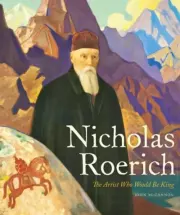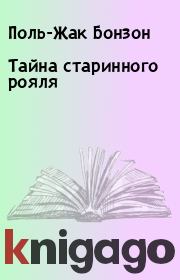John McCannon - Nicholas Roerich: The Artist Who Would Be King
 | Название: | Nicholas Roerich: The Artist Who Would Be King |
Автор: | John McCannon | |
Жанр: | Критика, История искусства | |
Изадано в серии: | неизвестно | |
Издательство: | неизвестно | |
Год издания: | 2022 | |
ISBN: | неизвестно | |
Отзывы: | Комментировать | |
Рейтинг: | ||
Поделись книгой с друзьями! Помощь сайту: донат на оплату сервера | ||
Краткое содержание книги "Nicholas Roerich: The Artist Who Would Be King"
Russian painter, explorer, and mystic Nicholas Roerich (1874–1947) ranks as one of the twentieth century’s great enigmas. Despite mystery and scandal, he left a deep, if understudied, cultural imprint on Russia, Europe, India, and America. As a painter and set designer Roerich was a key figure in Russian art. He became a major player in Diaghilev’s Ballets Russes, and with Igor Stravinsky he cocreated The Rite of Spring, a landmark work in the emergence of artistic modernity. His art, his adventures, and his peace activism earned the friendship and admiration of such diverse luminaries as Albert Einstein, Eleanor Roosevelt, H. G. Wells, Jawaharlal Nehru, Raisa Gorbacheva, and H. P. Lovecraft. But the artist also had a darker side. Stravinsky once said of Roerich that “he ought to have been a mystic or a spy.” He was certainly the former and close enough to the latter to blur any distinction. His travels to Asia, supposedly motivated by artistic interests and archaeological research, were in fact covert attempts to create a pan-Buddhist state encompassing Siberia, Mongolia, and Tibet. His activities in America touched Franklin Delano Roosevelt’s cabinet with scandal and, behind the scenes, affected the course of three US presidential elections. In his lifetime, Roerich baffled foreign affairs ministries and intelligence services in half a dozen countries. He persuaded thousands that he was a humanitarian and divinely inspired thinker—but convinced just as many that he was a fraud or a madman. His story reads like an epic work of fiction and is all the more remarkable for being true. John McCannon’s engaging and scrupulously researched narrative moves beyond traditional perceptions of Roerich as a saint or a villain to show that he was, in many ways, both in equal measure.
Читаем онлайн "Nicholas Roerich: The Artist Who Would Be King". [Страница - 250]
Star of the Hero (i932), 364
Starry Runes (i9i2), i34
The Steed of Happiness (i925—i926, "Maitreya" series), 563^
The Stone Age (i9i0), i34
The Summoned (i9i6), i79
Sviatogor (2 variants, i938, i942), 457, 466
Sviatopolk the Damned (ca. i893), 25
Sword of Gesar (i943), 460
Sword of Valor (i9i2), i35
The Tale of the Invisible City of Kitezh, designs for (i9ii),
i32—33; "Battle of Kerzhenets" curtain, i32, i74 Terra Slavonica (i943), 47i They Are Building a Town (i902), 58, 62, 64 They Are Building Boats (i903), 64, 66 The Three Joys (i9i6), i78, i94 The Three Magi, designs for (i907), i06, i32 The Thrice-Tenth Kingdom (i940), 464 "Tibetan Path" series (ca. i924), 260 The Time Has Come (i926), 302, 365 Tomb of the Giant (i9i5), i79 Tower of Fear (i939), 459
The Tragedy of Judas, Prince of Iscariot, designs for ^909, unrealized), i07
Treasure of the Angels (1905), 73, 86, 117 (111. 8), 2:3, 253
Treasure of the Snows (1940), 464
Treasure of the World—Chintamini (1924, "His Country" series), 260
Tristan and Isolde, designs for (i9i2—i9i4, unrealized), i45 Tristan and Isolde, designs for (i92i, unrealized), 223—24, 238 Tsar Saltan, designs for (1919, unrealized), 206
Vaidelotka (1913), 167 Vaidelotka at Prayer (ca. 1893), 25
The Valkyries, designs for (i907—i908, unrealized), i06
The Varangian in Tsargrad (i895), 33
Vasilisa the Beautiful (1942), 466
Vision (1923, "Messiah" series), 238
Voice of Mongolia (1937), 452
Walled Strongholds (1925—1926, "Maitreya" series), 563^9 Warrior of Pskov (ca. 1893), 25
Whispers of the Desert (Tale of the New Era) (1925—1926,
"Maitreya" series), 563^9 White Lady (i9i9), 2ii The Wisdom of Manu (1917), 179
Yaroslavna'sLament (1893), 25 Yaroslav the Wise (1941 or 1942), 466
•••
A prodigious amount of material has been written about (and by) the Roerichs. So
••
Initially, Roerich strove to emulate history painting as practiced by the dominant artistic school in Russia: the Wanderers, who had defined themselves in opposition to the establishment, only to become the establishment over time. In 1863, fourteen academy students, weary of the neoclassical conventions that governed Russian painting, dropped out to form a loose
••
Roerich spent so much time designing for the theater during these years, it is easy to forget how much easel work he did. He exhibited at least two or three times annually, both abroad and in Russia.51 Shows took his work to Brussels, for the 1910 Universal Exposition, to Austria-Hungary, and to London's Second Post-Impressionist Exhibition, where Russians enjoyed a huge success in 1912. He was in Paris three times:
•••
A crucial episode in this transformation unfolded between 1909 and 1915, as Roerich worked with the Saint Petersburg Temple Commission, which oversaw the
••
A rougher-hewn sacrality came to the fore that fall, as Roerich turned again to The Rite of Spring. Early in the year, there had been a flicker of hope that the Ballets Russes would include The Rite in its 1912 season. In March, an optimistic Stravinsky, pleased with his progress on act 2, spoke to his brother Andrei about the possibility of a 1912 premiere and wrote Roerich to say, "I think I have penetrated the secret of spring's lapidary rhythms and have felt them coupled with the dramatis personae of our child."120 That month, though, Diaghilev scrapped
•••
Stage design did not go as well as easel work. With The Rite behind him, Roerich
••
Even with a war on, the fall of 1914 found Roerich back at the IOPKh School. Deteriorating material conditions and the loss of male students to the front made it a struggle to keep the school open, but Roerich
•••
In a matter of days, though, Roerich was taken out of the fight. He grew sicker in July and, for the next several months, could no longer travel to Petrograd. In August, with great sorrow, he stepped down as director of the IOPKh School, a post he had held for eleven years. The school's health was
•••
Roerich hinted at his future direction in a letter from this time to Ivan Bilibin, who had written from Cairo, seeking advice about whether he should remain in Egypt or go back to Europe. Roerich suggested to Bilibin that he put the West behind him. "There, the twilight of the gods is drawing
•••
Failure in Manchuria was not the only trouble weighing Roerich down as he trudged on to Tientsin. Bad news had been arriving from New York, Washington, and Paris.
•••
The first eight months of 1939 were replete with anxiety for millions throughout the globe. Springtime brought with it the German occupation of rump Czechoslovakia and the Lithuanian port of Memel, as well as Italy's conquest of Albania. Over
--">Книги схожие с «Nicholas Roerich: The Artist Who Would Be King» по жанру, серии, автору или названию:
 |
| Марк Соломонович Гроссман, Михаил Петрович Аношкин, Сергей Иванович Черепанов и др. - Южный Урал, № 31 Жанр: Советская проза Год издания: 1958 |





